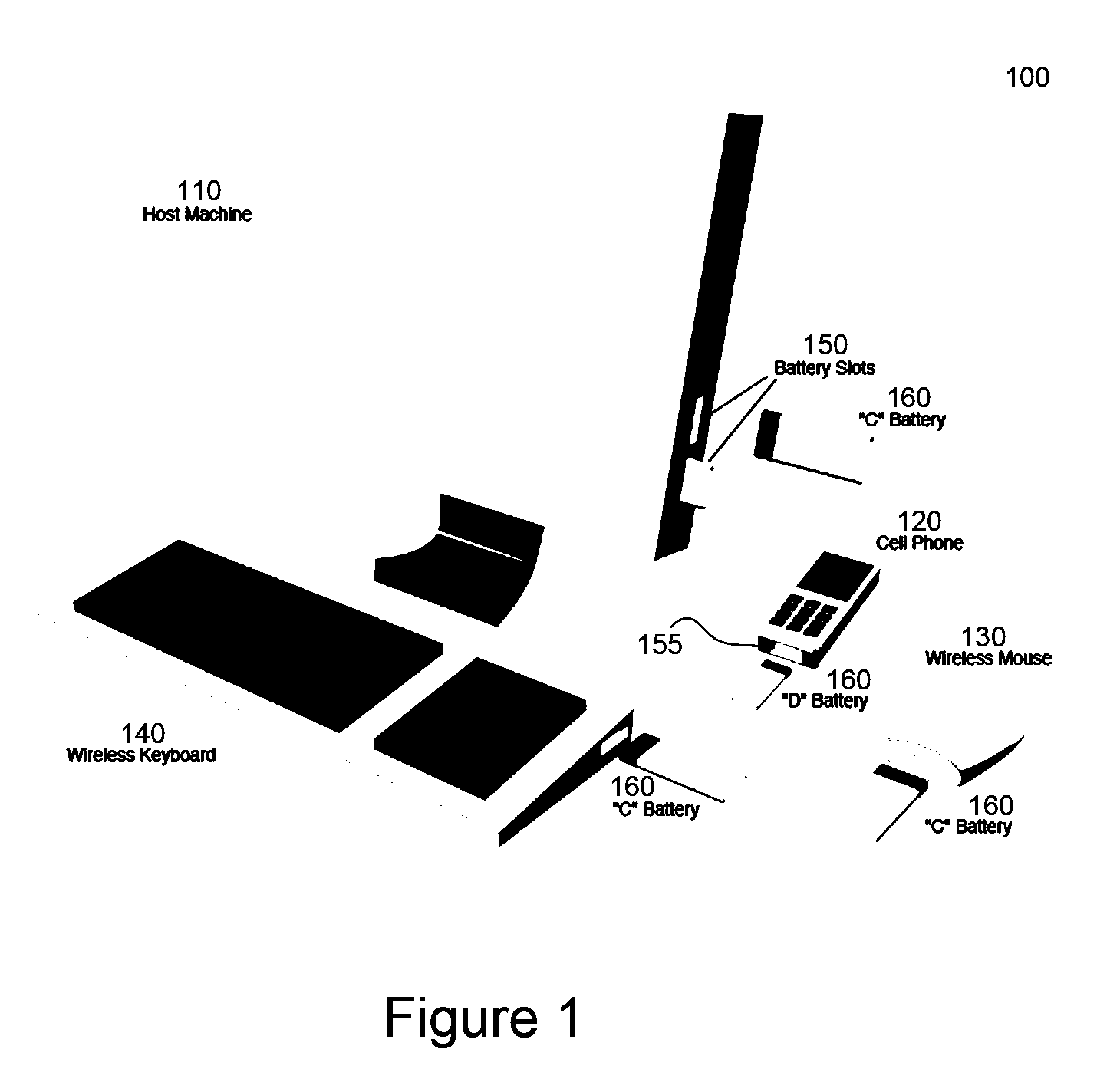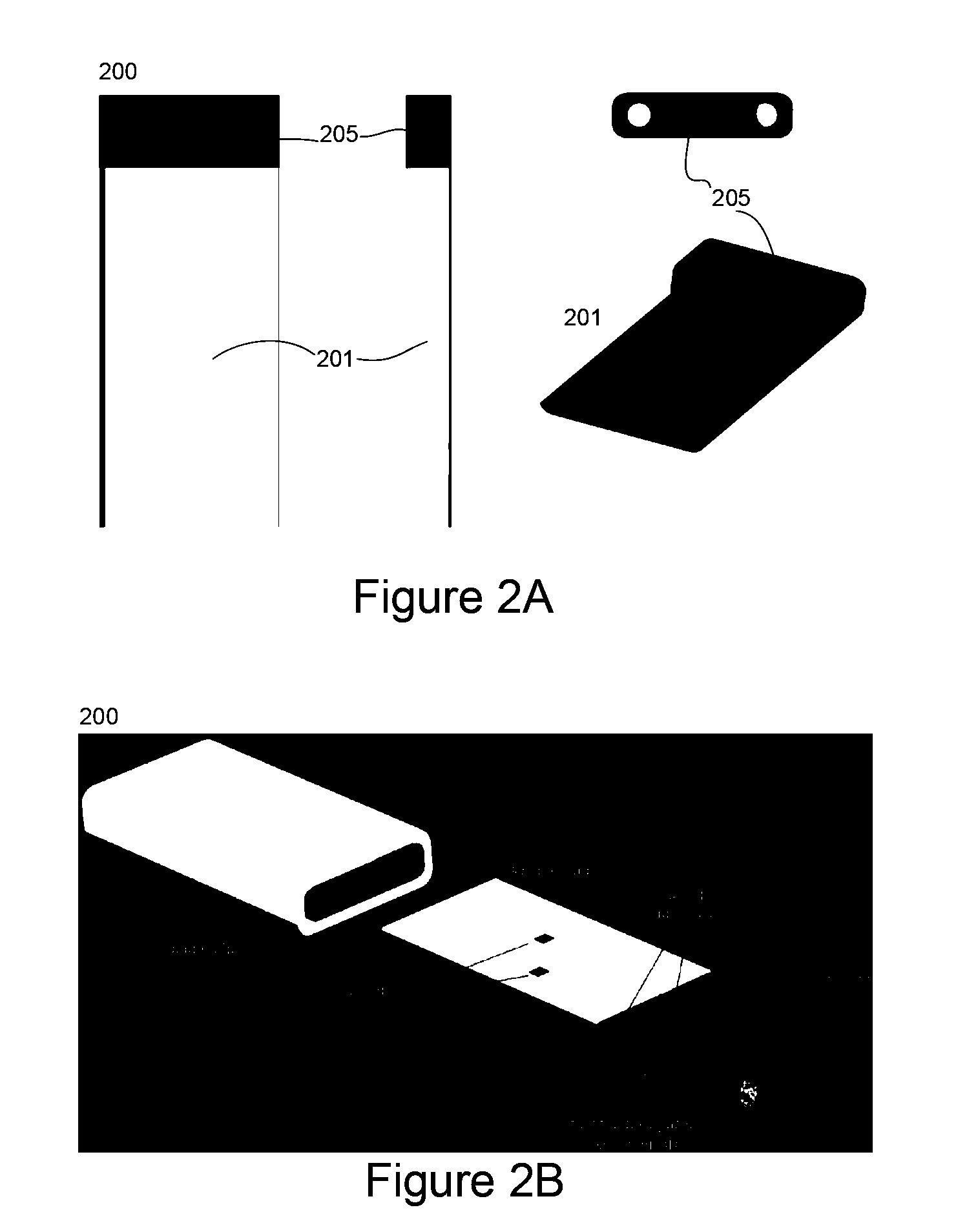Host machines for battery charging system
a battery charging and host machine technology, applied in the direction of mobile unit charging stations, transportation and packaging, and battery arrangement for several simultaneous batteries, can solve the problems of user inconvenience, constant need to recharge or replace wireless devices batteries, and low power requirements of wireless devices, so as to reduce the associated downtime and low charge
- Summary
- Abstract
- Description
- Claims
- Application Information
AI Technical Summary
Benefits of technology
Problems solved by technology
Method used
Image
Examples
Embodiment Construction
[0042]The present invention relates in general to battery charging and in particular to charging of batteries used in connection with wireless or mobile accessory devices. This section discusses the invention in terms of several exemplary embodiments to better illustrate the invention. The embodiments should not be taken by themselves to unnecessary restrict the scope of the invention.
[0043]FIG. 1 illustrates a battery charging system 100 for mobile and accessory devices in accordance with a specific embodiment of the current invention. An exemplary battery charging system 100 may include host machine 110, plurality of wireless or mobile accessory devices 120, 130, 140, and plurality of rechargeable batteries 160 powering the wireless or mobile accessory devices 120, 130, 140. In an exemplary embodiment, the host machine can be a desktop personal computer, and the wireless or mobile accessory devices can be any of several wireless or mobile devices proximally located to the desktop ...
PUM
 Login to View More
Login to View More Abstract
Description
Claims
Application Information
 Login to View More
Login to View More - R&D
- Intellectual Property
- Life Sciences
- Materials
- Tech Scout
- Unparalleled Data Quality
- Higher Quality Content
- 60% Fewer Hallucinations
Browse by: Latest US Patents, China's latest patents, Technical Efficacy Thesaurus, Application Domain, Technology Topic, Popular Technical Reports.
© 2025 PatSnap. All rights reserved.Legal|Privacy policy|Modern Slavery Act Transparency Statement|Sitemap|About US| Contact US: help@patsnap.com



